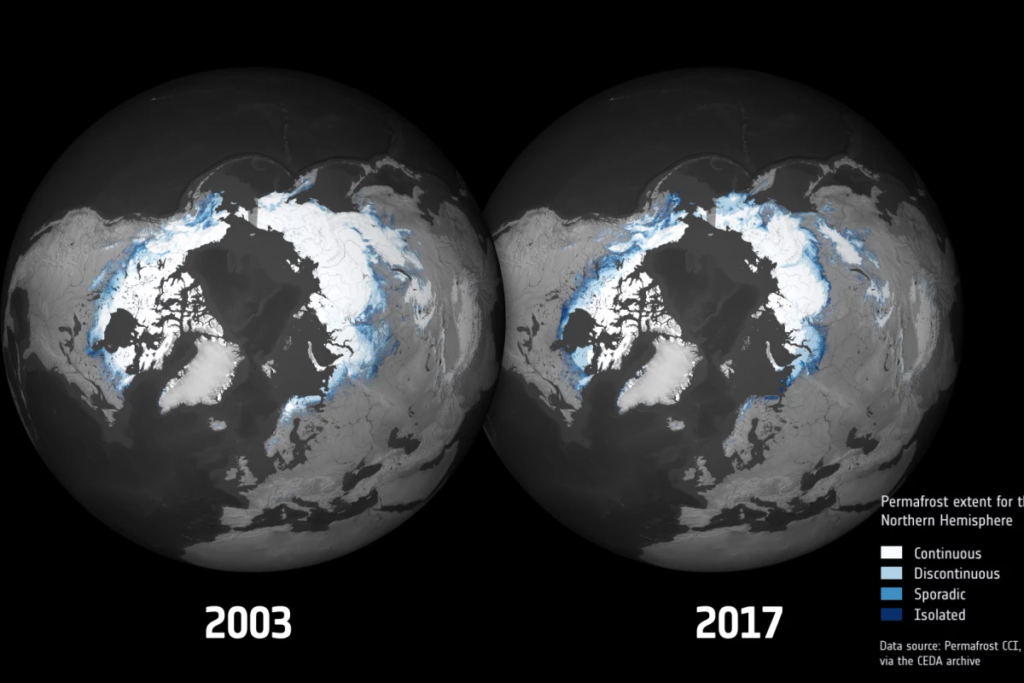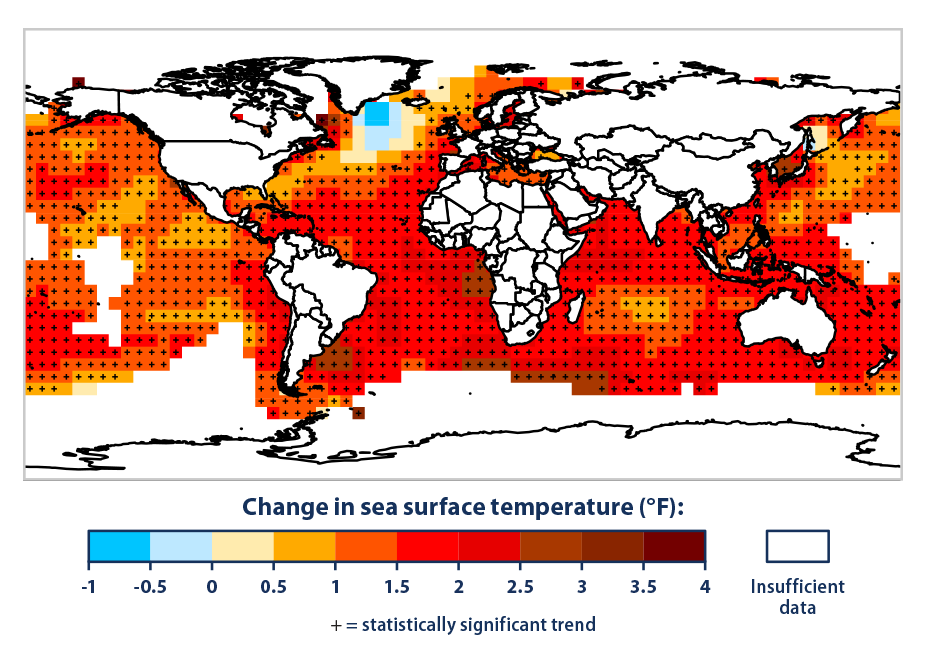The Arctic Is Melting:
Will the Water End Up in Your Basement?
Record-breaking wildfires, an abnormally active Atlantic hurricane season, longer droughts and heavier rainfall – experts repeatedly point to climate change to explain the more frequent, more intense weather events that have become our reality.
But how, exactly, does the global warming we heard scientists warn about for decades change the weather in our own backyards?
Over the next few decades, a warmer planet will melt the Arctic, raise sea levels, flood coasts, and bring more devastating storms worldwide. Here’s a look at how climate change works from the top of the globe down to your basement and what you can do to better protect your property from flood risk.
How Thawing Permafrost Creates a Vicious Warming Cycle
Climate change due to human activity has unlocked a ticking time bomb deep in the Earth’s soil.
The greenhouse gas emissions generated by industrial processes like burning coal, oil, and natural gas are currently the leading cause of our rapidly changing climate. Greenhouse gases are responsible for keeping our planet warm enough to inhabit, but these emissions are accumulating in the atmosphere faster than our oceans and forests can absorb the excess.
As a result, Earth’s average temperature rose by about one degree Fahrenheit in the 20th century. Higher temperatures are in turn warming the permafrost, the ground that’s been frozen since the last Ice Age.

Figure 2: The gradual thawing of the permafrost between 2003 and 2017 around the Arctic pole. Source: European Space Agency.
As the permafrost thaws, it releases decomposed organic matter in the form of carbon dioxide and methane into the atmosphere. While the permafrost’s emissions are currently being offset by natural absorption processes, scientists worry that won’t last for much longer as global temperatures rise.
Why a Warmer World Floods More Often
Higher temperatures worldwide contribute to increased flooding of all kinds.
First, global warming is connected with the threat of rising seas. The cause of sea level rise is twofold:
- The warmer the ocean, the more it expands. Water expands as it warms, and the oceans are currently absorbing more than 90 percent of the increased atmospheric heat from greenhouse gas emissions.
- Land-based ice, like glaciers and ice sheets, are melting. The Arctic is heating twice as fast as any place on Earth. The enormous volumes of water created by a melting Arctic will raise sea levels worldwide.

Figure 2: The change in sea surface temperature from 1901 to 2015. Source: Environmental Protection Agency.
The consequences of sea level rise will be felt first and most acutely along the world’s coasts. Major cities located on the ocean like New York and Miami will see increased shoreline erosion, flooding, and storm hazards. Raised sea levels can also create more intense storm surges that push further inland, like the one that inundated the New York tri-state area following Hurricane Sandy.
Hurricanes and tropical storms, while not increasing in frequency, are also becoming more intense due to the warmer atmosphere. Hurricane Florence is a documented example of how climate change amplified the storm’s duration, diameter, and rainfall.
And global warming is manifesting in regional storm patterns far from the coasts. A warmer atmosphere holds more moisture, which makes clouds that produce heavier rainfall and inland flooding of rivers and their tributaries.
What You Can Do: Understand Your Flood Risk to Get the Protection You Need
Understanding the risks of climate change is an important first step toward better protecting our communities from flood and other weather-related damage. Individual flood risk determines your flood insurance coverage, and flood insurance is a crucial financial protection against flood damage.
It’s critical to know how flood patterns are changing in your own community, because that might tell you two things: you may now be in a higher risk category, and you may not have realized you need flood insurance in the first place.
In addition to securing flood insurance, there are a number of structural precautions home and property owners can take to mitigate the effects of flood damage. Common wet and dry flood-proofing measures include installing drainage systems and erecting impermeable surrounding walls.
Finally, have a flood plan in place. Head to our Flood Assistance page to learn more about flood safety and how to create a family emergency plan.
Climate Change Makes Flooding a More Common Reality
It’s easy to think of the melting Arctic as a distant and abstract problem, but the impacts of climate change are already tangible. From stronger hurricanes to coastline erosion to inland flooding, a warmer world has already pushed more water into our communities.
So, we need to be intentional about mitigating risk and preventing flood damage. That starts with getting the financial protection you need and making sure you, your family, and your home or property has the necessary resources to withstand a major flooding event.
Blog Articles
risk climate change risk climate change risk climate change risk climate change
